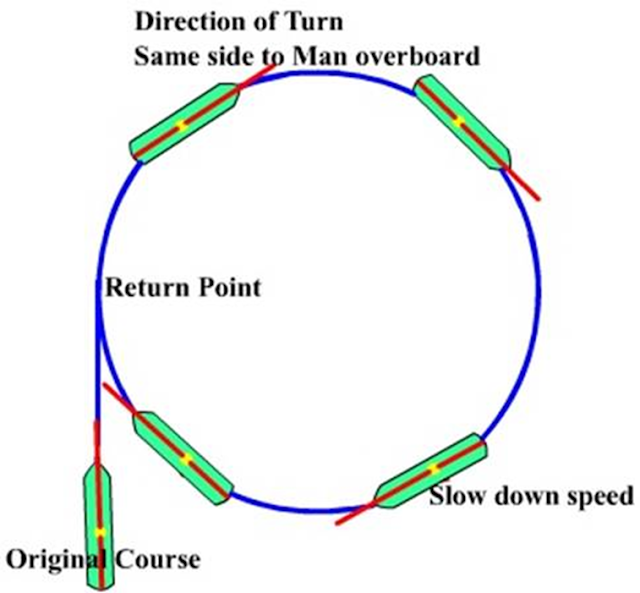#2 Ship Manoeuvring - for rescue of person overboard

Ship Manoeuvres for a Man Overboard The Round or Anderson Turn is a maneuver used to bring a ship or boat back to a point it previously passed through, often for the purpose of recovering a man overboard. This turn is most appropriate when the point to be reached remains clearly visible. Both will require more time before returning to the point in question. 1. If the turn is in response to a man overboard, stop the engines. 2. Put the rudder over full. If in response to a man overboard, put the rudder toward the person ( e.g. , if the person fell over the starboard side, put the rudder over full to starboard). 3. When clear of the person, go all ahead full, still using full rudder. 4. After deviating from the original course by about 240 degrees (about 2/3 of a complete circle), back the engines 2/3 or full. 5. Stop the engines when the target point is 15 degrees off the bow. Ease the rudder and back the engines as required. If dealing with a man overboard, always bri

